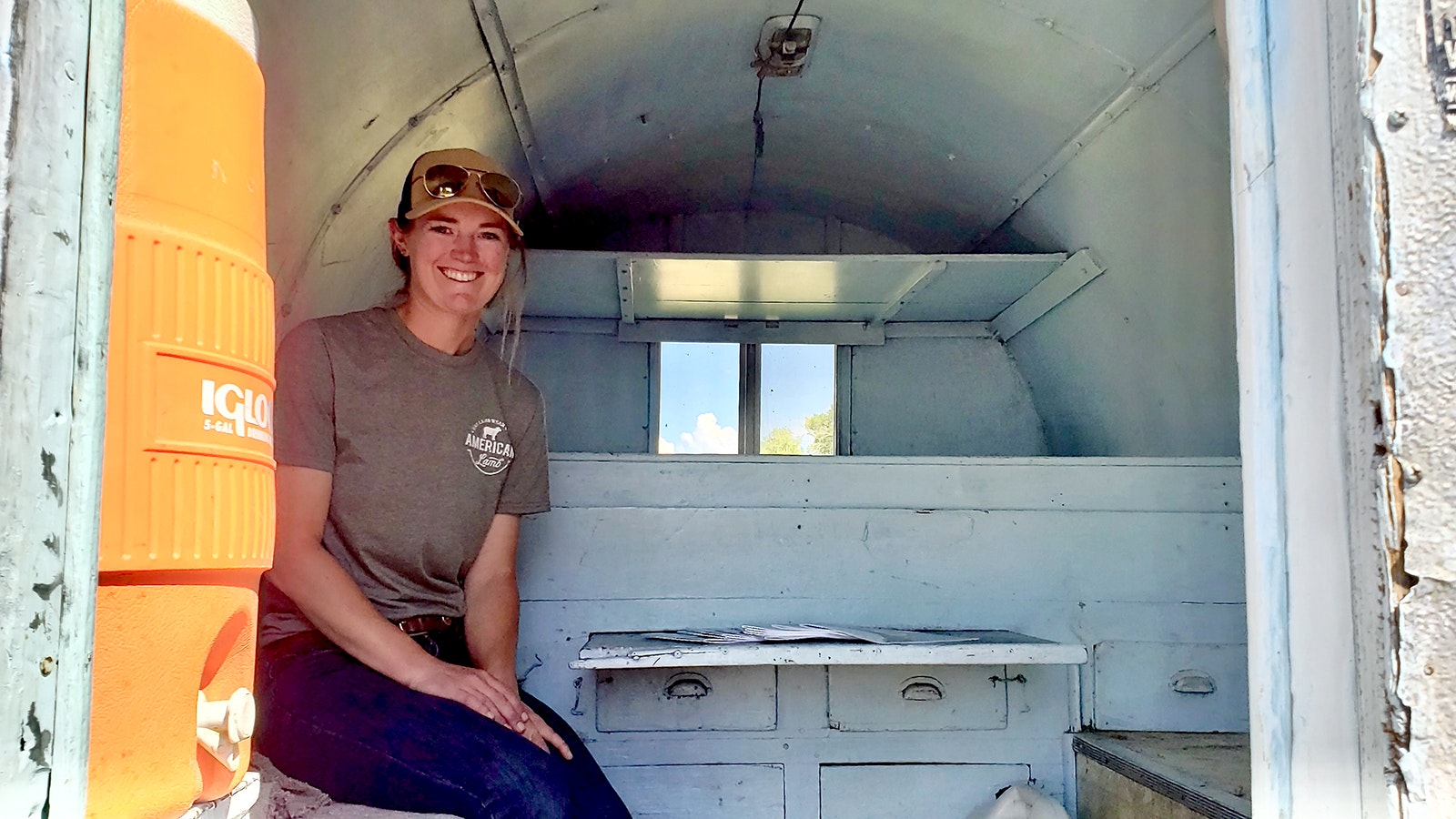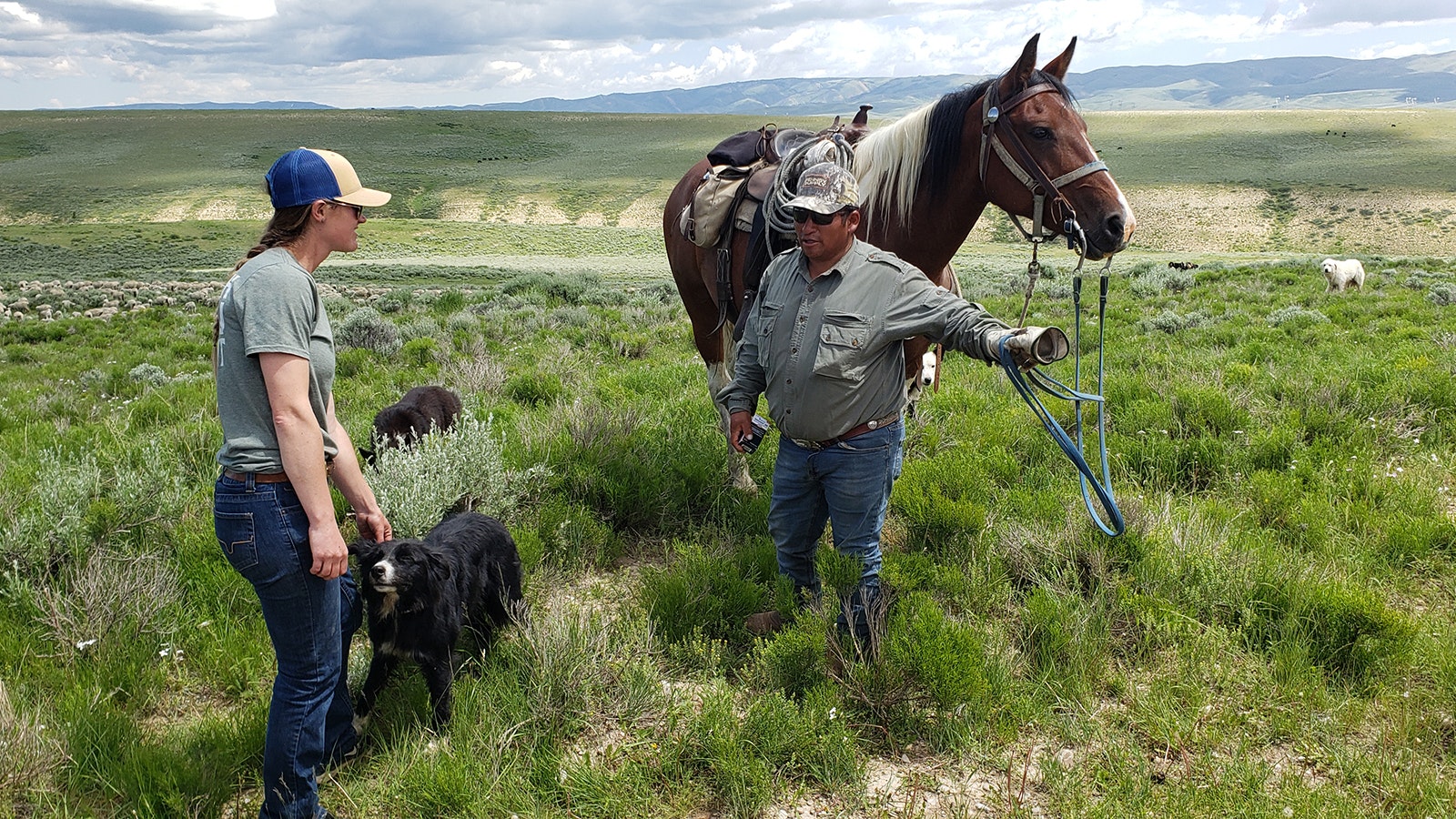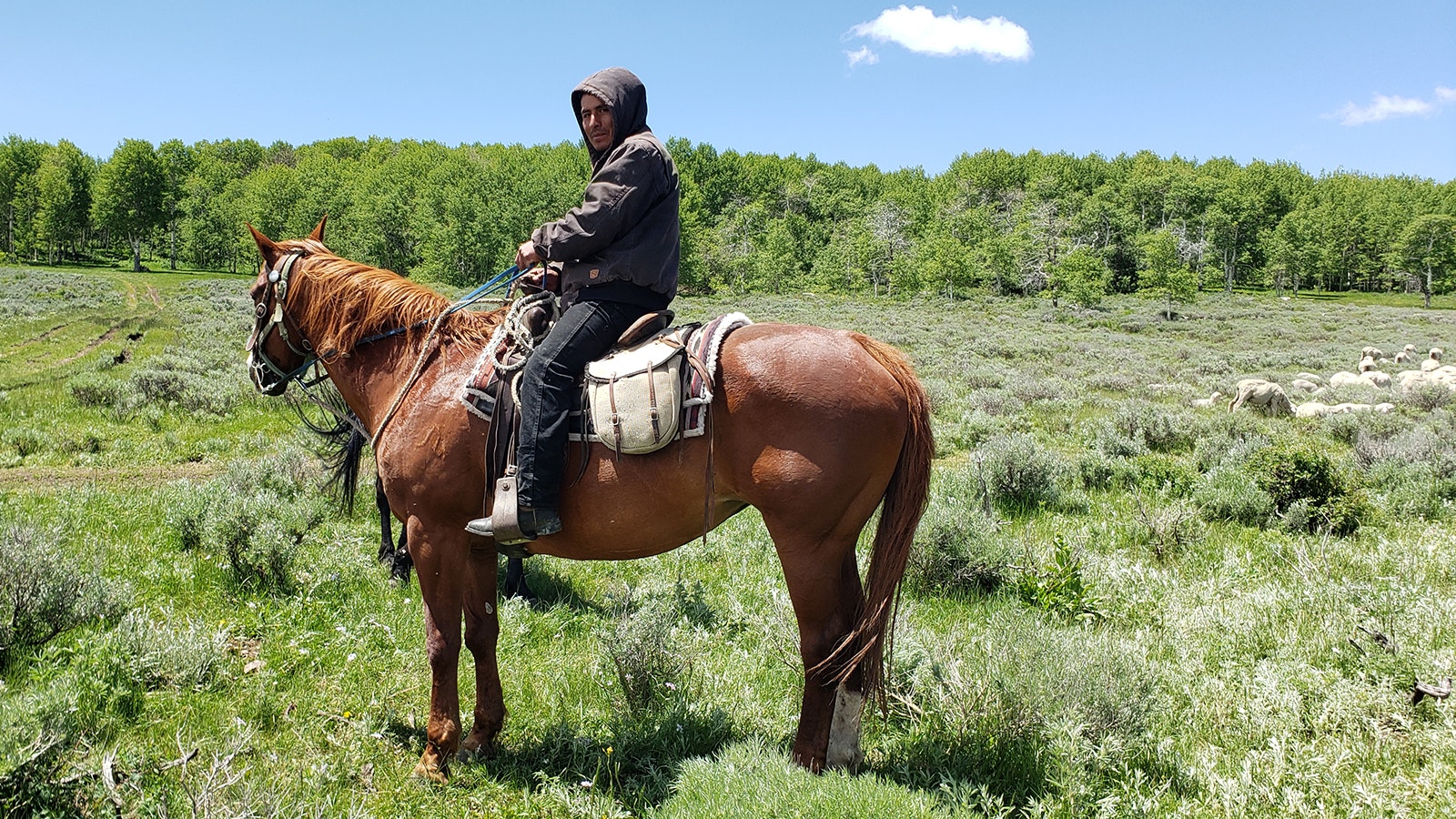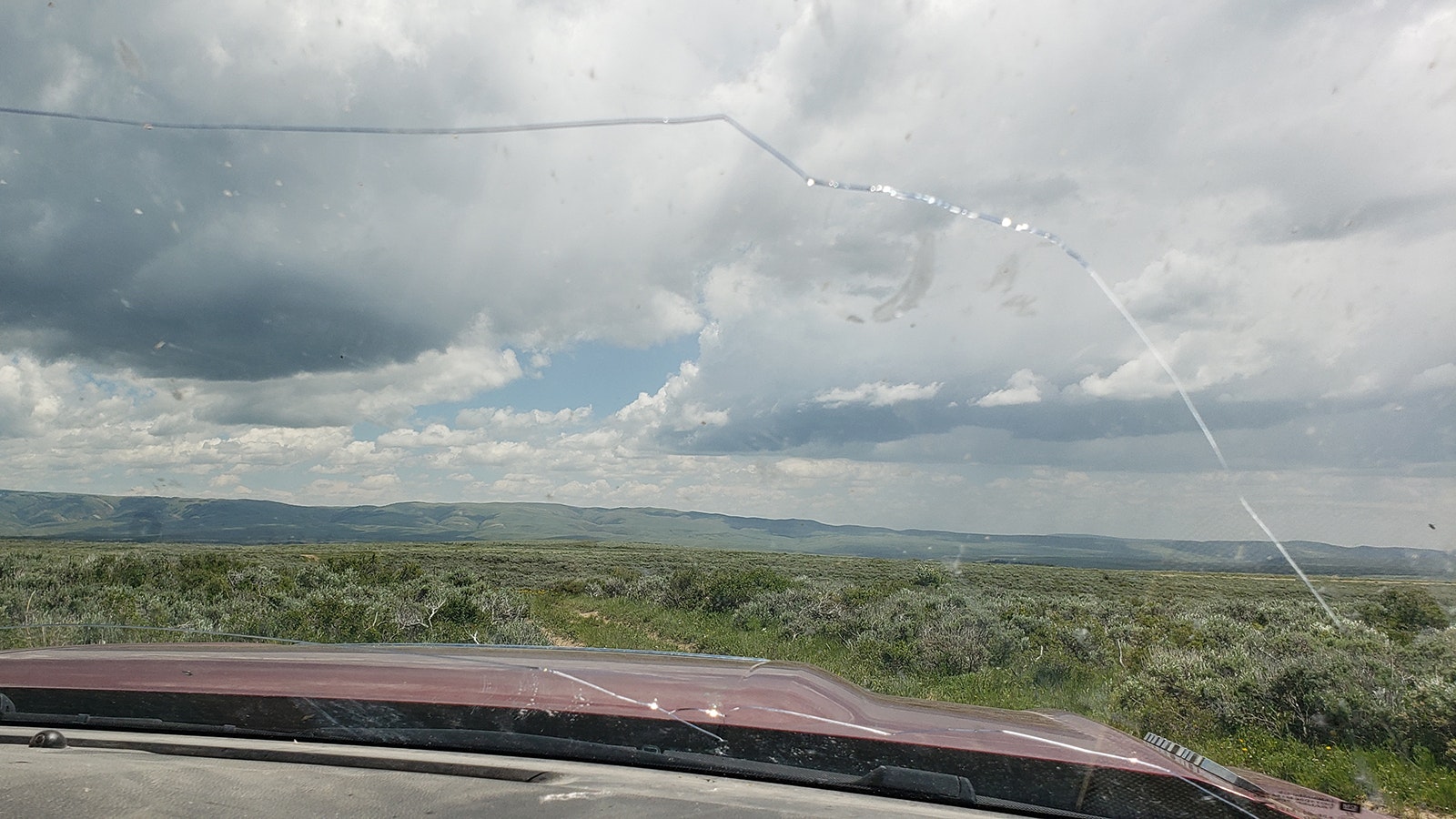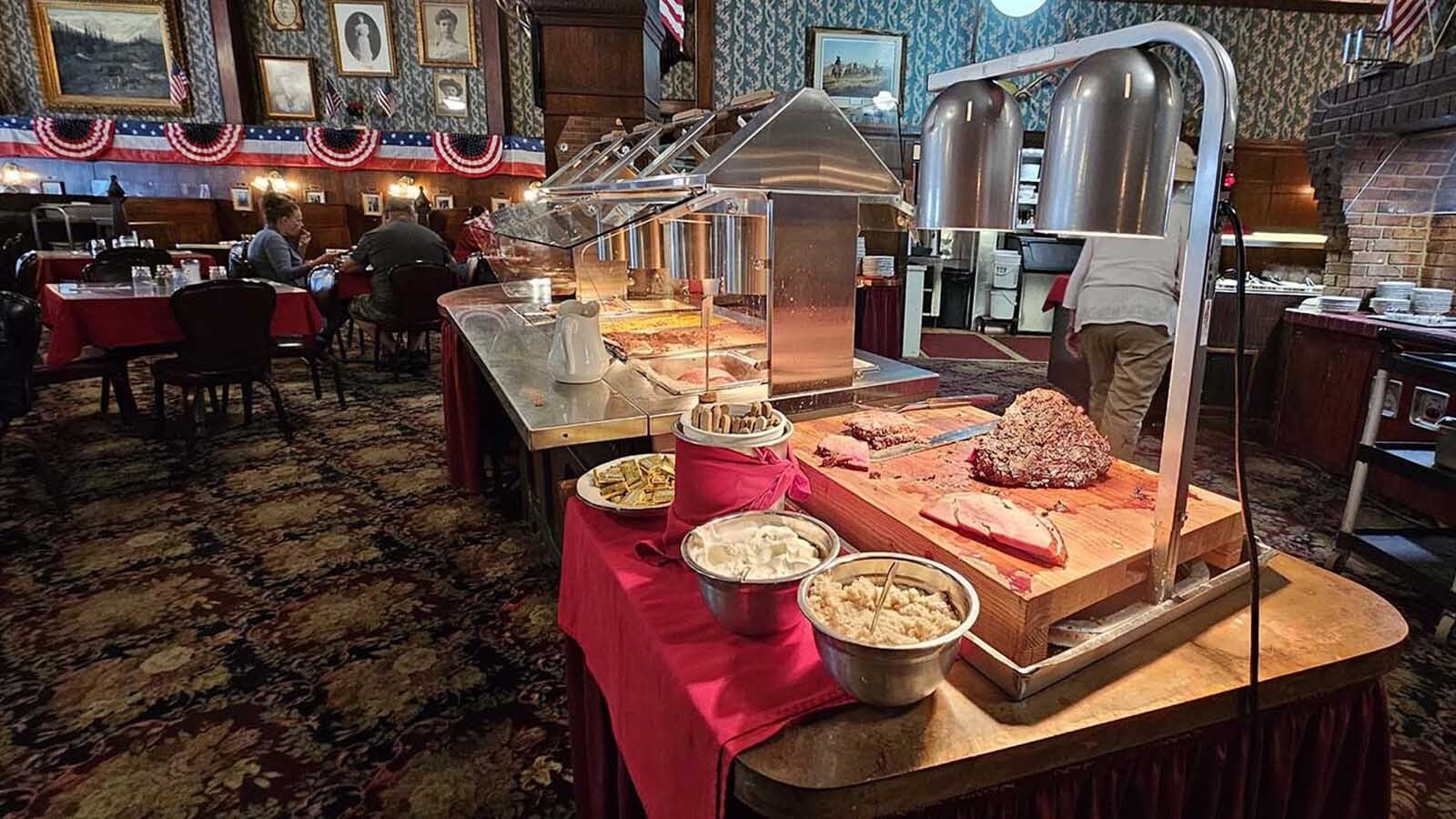KEMMERER — The sheep hills of Kemmerer are greener than Marie McClaren has ever seen them.
But the fifth-generation sheep rancher paid a dear price for those emerald green hills. They are the product of a winter harder than any she can remember.
“It was brutal, just horrible,” McClaren told Cowboy State Daily. “It snowed every other day in February. We had, like, consistently 4 feet of snow covering everything.”
That meant hauling a couple days worth of hay every other day out to a desert-like area near Rock Springs, where the sheep herds winter.
When spring came, the situation didn’t get better. It got worse, Marie’s mother Trudy Julian told Cowboy State Daily.
Two more feet of snow came down on top of the 4 feet that was already there.
“(The sheep) seemed to maintain all winter,” Julian said. “But with the spring really late this year, that’s when we lost some of the animals.”
She estimates they lost between 7% to 10% of the herd.
“They were just so weak from the winter,” Julian said. “That green grass at the beginning of spring, when it’s just starting out, has a lot of nutrients in it, and that’s what they really wanted to eat.”

Almost 200 Years Of History
Marie McClaren is a fifth — maybe even sixth — generation sheep rancher in Kemmerer.
Her great-grandfather’s grandparents, the Cooks, homesteaded up in the Rock Creek area in the 1800s.
In 1944, a Cook married into the Julian family, longtime sheepherders since the early 1900s. Don and Josephine Julian established the Rock Creek Ranch, which is part of the present-day Julian Land and Livestock Co.
Julian wasn’t sure if the Cooks were sheepherders like the Julians, but if so, that would make McClaren a sixth-generation rancher on that side. She’s fifth generation on the Julian side.
McClaren heard many stories growing up about Rock Creek Ranch and how it was a booming place, filled with people. Some of those people were relatives, others sheepherders and friends.
All were fed great meals to fuel the hard work of ranching life, and many cherished memories were made.
It’s a way of life McClaren grew up in and loves, one she hopes to pass down someday.
“Back in the day, there used to be just sheep herds scattered out in the sagebrush and herders out with them living in camps,” she told Cowboy State Daily. “It’s still like that, and I think that’s really neat. It hasn’t changed over the course of time. It’s still the same as it was a couple hundred years ago.”
Nomads In The Modern Age
The sheepherders in Kemmerer live a nomadic lifestyle rare for the modern-day.
The shepherds cannot leave behind cabins or any permanent structures, so they sleep in wheeled trailers that get moved from one camp to the next along a 300-mile round-trip.
During the day, the shepherds trail alongside the sheep on horseback, followed by guard dogs and sheep dogs.
Their presence protects the flock from predators, which is a constant vigil. There are bears in the mountains, as well as coyotes and birds.
Bears don’t usually bother the sheep, McClaren said. It’s the birds that are actually the worst.
“The crows like peck the eyes out (of newborns),” she said. “It’s awful. They’re aggressive.”
The sheep follow after whatever is green in any given season.
In the summer, that’s high up in the mountains, where they’ll eat forbs and snow drifts all summer long.
“Sheep tend to graze up in the higher, steeper country where cattle can’t really go,” McClaren said. “So really, they complement each other.”
Sheep are also low-impact grazers, McClaren added.
“Not to bash cows, because we also have cows, but you can tell where a cow has grazed, versus, you know, where the sheep have been. We can graze a herd of sheep in an area, and you can’t even tell that a herd of sheep was there.”
Down To The Desert
In the fall, the sheep trail back down the mountains, heading for a desert area near Rock Springs, where lots of other companies also winter their sheep. These companies come from other states, too, like Utah, Idaho and Colorado.
“(The sheep) know the routine of like trailing to the forest,” Marie said. “They know they’re supposed to be heading north, and they know the trail. And when they’re up in the forest and it’s getting close to the middle of September, the sheep are getting antsy to start heading back down. They just know, the animals know when it’s time to move.”
Fall is one of many times when Marie is struck by the intelligence of these animals who have lived off the range in Kemmerer for a couple of centuries now.
“They can do dumb things,” she said. “But that’s just because we don’t understand what they’re doing and they don’t understand what we’re doing. It’s not because they’re dumb.”
Speaking Spanish
McClaren went to college, where she studied animal science and range management.
She also took Spanish all four years in high school for a very practical reason. Most of the ranch’s sheepherders are Peruvian, and Spanish is their native tongue. Many of them speak little to no English.
They come to America to work on temporary visas.
“We send some of them home in the winter because we only need like half the guys in the winter,” McClaren said. “So, we have them on a rotation where they get sent home for a little while, and then we bring them back for lambing.”
That rotation also fits the legal requirements of the work visas the shepherds are brought in on.
Most do return to the ranch year after year, making careers of it. Hermon, for example, has been working on the Kemmerer sheep ranch for 25, 26 years.
“A lot of these guys watch us grow up,” McClaren said.
In the fall, when the sheep come down from the mountains, the herders come down too, and there are soccer games, shopping trips in town, and other fun activities.
Sheep Ranching Is Endangered
Wyoming is the fourth largest sheep producer in the country, but the way of life McClaren loves is an endangered one.
“Everything is so expensive,” McClaren said. “So, like prices, wages for the sheep herders just keep going up and up and up. The prices of food keeps going up. And the price of fuel keeps going up. We use a lot of fuel.”
The price of lamb, meanwhile, is hovering around a dollar per pound, McClaren said.
That’s puzzling to a lot of ranchers, given the kinds of prices they see in grocery stores.
“There’s lamb chops for $26 a pound, when we were getting a dollar a pound,” McClaren said.
Wool is not especially lucrative right now either, so it doesn’t help make ends meet.
“It’s a little better this year than it has been the last couple of years, but you don’t make any real money on the wool,” she said.
The economics have McClaren thinking of ways to boost the ranch’s revenue.
Some ranches are direct-selling the meat to consumers for a premium — something Julian and McClaren said they are considering as well.
McClaren is also creating a ranch stay as well. It could range from simply camping out in one of the sheepherder wagons, to a full-on, hands-on ranching experience, depending on what the guest wants.
“I’m really passionate about, like, teaching people about sheep ranching,” she said. “I love talking about everything that we do, and what goes on out here. I love like showing it to people. You know I think that if you don’t teach people about what you’re actually doing they form their own opinions from afar.”
McClaren hopes the ranch keeps alive a way of life going back almost 200 years.
“There’s definitely no money (in this),” McClaren said. “It’s a lifestyle. You do it because you love it. And kids nowadays don’t love working sunup to sundown, and having no money, and having no free time, and not having weekends off.”
McClaren still loves it despite all that.
“Don’t get me wrong, I like to get away for a weekend every now and then,” she said. “But I like being busy, and it’s not like it’s really work if you love what you do.”
Gesturing toward all the scenery at the top of the Kemmerer world, she laughs.
“People pay to do this for fun,” she said. “And I’m doing it for work.”
Renée Jean can be reached at renee@cowboystatedaily.com.




